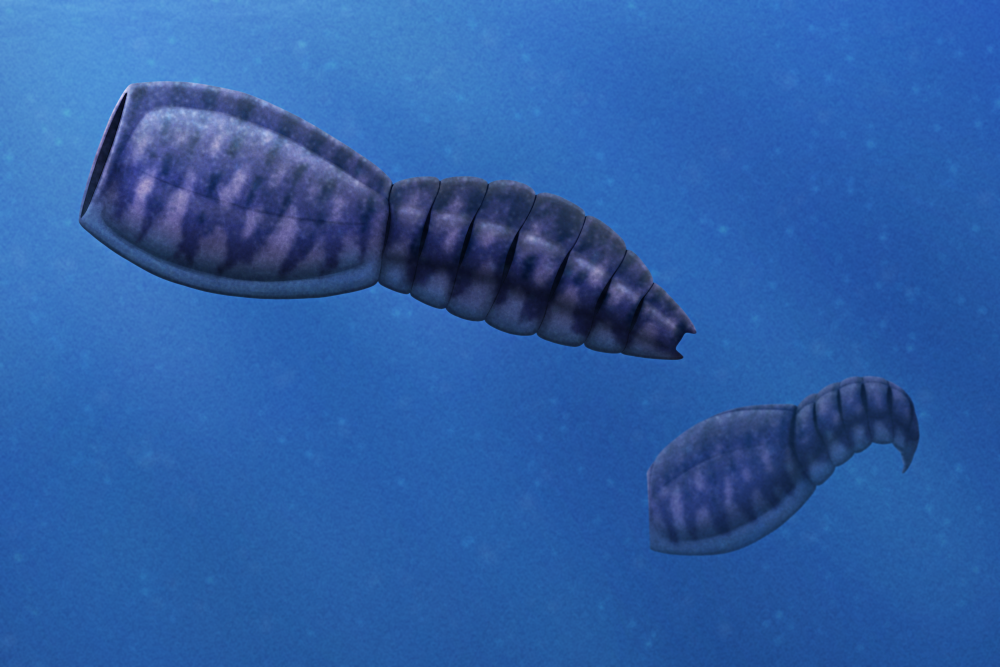Nesonektris aldridgei here was one of the bizarre vetulicolians, a group of Cambrian animals that lived between about 520 and 505 million years ago.
Known from the Emu Bay Shale fossil deposits in Kangaroo Island, South Australia (~514 million years ago), Nesonektris was one of the larger known vetulicolians, growing to at least 17cm long (~6.5″). Like most of its relatives it had a large streamlined forebody with a mouth opening at the front, and no obvious appendages or sensory structures. A groove down each side may have housed gill openings, and a segmented flexible tail provided propulsion for swimming.
Very little is known about the ecology of these animals. They were clearly adapted for active swimming in the water column, and may have filter-fed on plankton – but some other vetulicolians have been found preserved with their guts full of seafloor sediment, suggesting some sort of detritivorous lifestyle instead.
Their evolutionary relationships are also still uncertain, but preservation of what appears to be a notochord in Nesonektris suggests that vetulicolians may have been part of the chordate lineage, possibly close relatives of tunicates.

